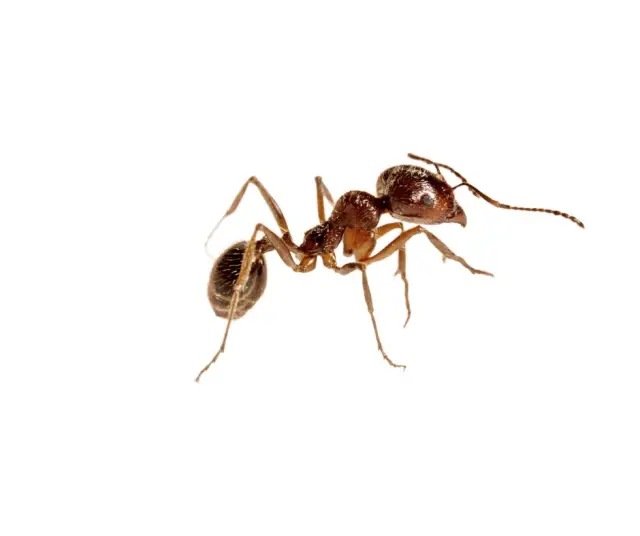Big-ass ants, scientifically known as Atta laevigata, are a species of ant found mainly in the Santander region of Colombia . This peculiar insect has been part of the local diet for centuries and is considered a gastronomic delight by its inhabitants.
History and Tradition
Culona ants have been consumed by indigenous communities in the Andean area since pre-Columbian times. These large ants, which can measure up to 2 cm long, were collected and consumed as an important source of protein and nutrients. Over time, the tradition has been maintained and evolved, becoming an integral part of Santander's cultural identity.
The collection of culona ants is carried out during the rainy season, between March and June, when the ants leave their nests to begin their nuptial flight. This event is a signal to foragers, who take the opportunity to capture the ants en masse.
Collection and Preparation Process
Harvest
Collecting culona ants is a process that requires skill and knowledge of ant behavior. The foragers go out early in the morning to find the active anthills. They use shovels and nets to capture the winged ants when they emerge from their nests. This activity is not only a tradition, but also a source of income for many families in the region.
Preparation
Once collected, the ants go through a cleaning and preparation process. First, the wings and legs are removed, leaving only the abdomen, which is the most desired part. The ants are then roasted in a pan with salt, a process that can take several hours. This preparation method gives the ants a crunchy, smoky flavor, similar to dried fruit.
In some cases, ants can also be fried or cooked in sauces and other traditional dishes. However, the roasting method is the most common and the one that best highlights its distinctive flavor.
Nutritional Benefits
Butt ants are not only a delicious delicacy but also a rich source of nutrients. They are especially valued for their high protein content, healthy fats and essential micronutrients.
Nutritional composition
Protein: Culona ants contain a high percentage of protein, around 42%, making them an excellent alternative to traditional protein sources such as meat and eggs.
Fats: Although they contain fats, these are mainly healthy fats, such as omega-3 fatty acids, which are beneficial for the heart.
Vitamins and Minerals: Ants are rich in vitamins such as B12 and minerals such as zinc and iron , essential for good health.
Health benefits
Consuming culona ants can provide several health benefits, such as:
Improvement of the immune system: Thanks to its zinc and iron content.
Increased energy: Due to its high protein and healthy fat content.
Cardiovascular health: Due to omega-3 fatty acids that help maintain a healthy heart.
Cultural Importance
Big-ass ants are much more than food in the Santander region; They are a symbol of cultural identity and regional pride. Its consumption is associated with local celebrations and festivities, and its collection and preparation are transmitted from generation to generation.
Celebrations and Festivities
During the collecting season, it is common to see fairs and festivals dedicated to big-bottomed ants. These events not only celebrate the arrival of the rainy season, but also the abundance of this precious insect. At fairs, you can taste culona ants prepared in various ways, as well as purchase derived products, such as sauces and snacks.
Gastronomic tourism
Interest in culona ants has transcended the borders of Colombia, attracting curious tourists from all over the world. Gastronomic tourism in the Santander region has grown significantly, with visitors coming to experience this unique delicacy and learn about the local culture.
Economic impact
The collection and sale of culona ants represents an important source of income for many families in Santander. The trade in culona ants is not only carried out locally, but is also exported to other regions of Colombia and internationally.
In the local markets of Santander , culona ants are sold in different presentations: fresh, roasted or in processed products. Prices may vary, but are generally affordable for locals. However, due to their growing popularity, the price of culona ants has increased, economically benefiting collectors and traders.
The export market for culonas ants has grown in recent years. Countries such as the United States and Canada have shown interest in this exotic delicacy, and Colombian companies have begun to export culona ants to these markets. This expansion has allowed local collectors and producers to access new markets and increase their income.
Ecological impact
Collecting culonas ants also has an ecological impact that must be carefully managed to ensure the sustainability of the species and the balance of local ecosystems.
Conservation of the Species
Culona ants play an important role in the ecosystem as decomposers and in soil aeration. It is therefore crucial that harvesting is done sustainably. Some measures include limiting the number of ants collected and protecting certain anthills to ensure the survival of the species. The collection of culona ants can be integrated into sustainable agricultural practices. For example, some farmers combine ant harvesting with coffee and cocoa cultivation, creating agroforestry systems that benefit both the insects and the crops.
Despite the economic and cultural benefits, collecting culonas ants faces several challenges. These include fluctuation in the ant population due to climate changes and the need for regulations that ensure sustainable harvesting. As interest in exotic and sustainable foods grows globally, culona ants have the potential to become a gourmet product in high demand. This represents an opportunity for producers and collectors to improve their practices and access premium markets.
The future of culona ants will depend on our ability to balance their consumption with conservation practices, ensuring that these little wonders continue to be an integral part of Santander's culture and economy for generations to come.
